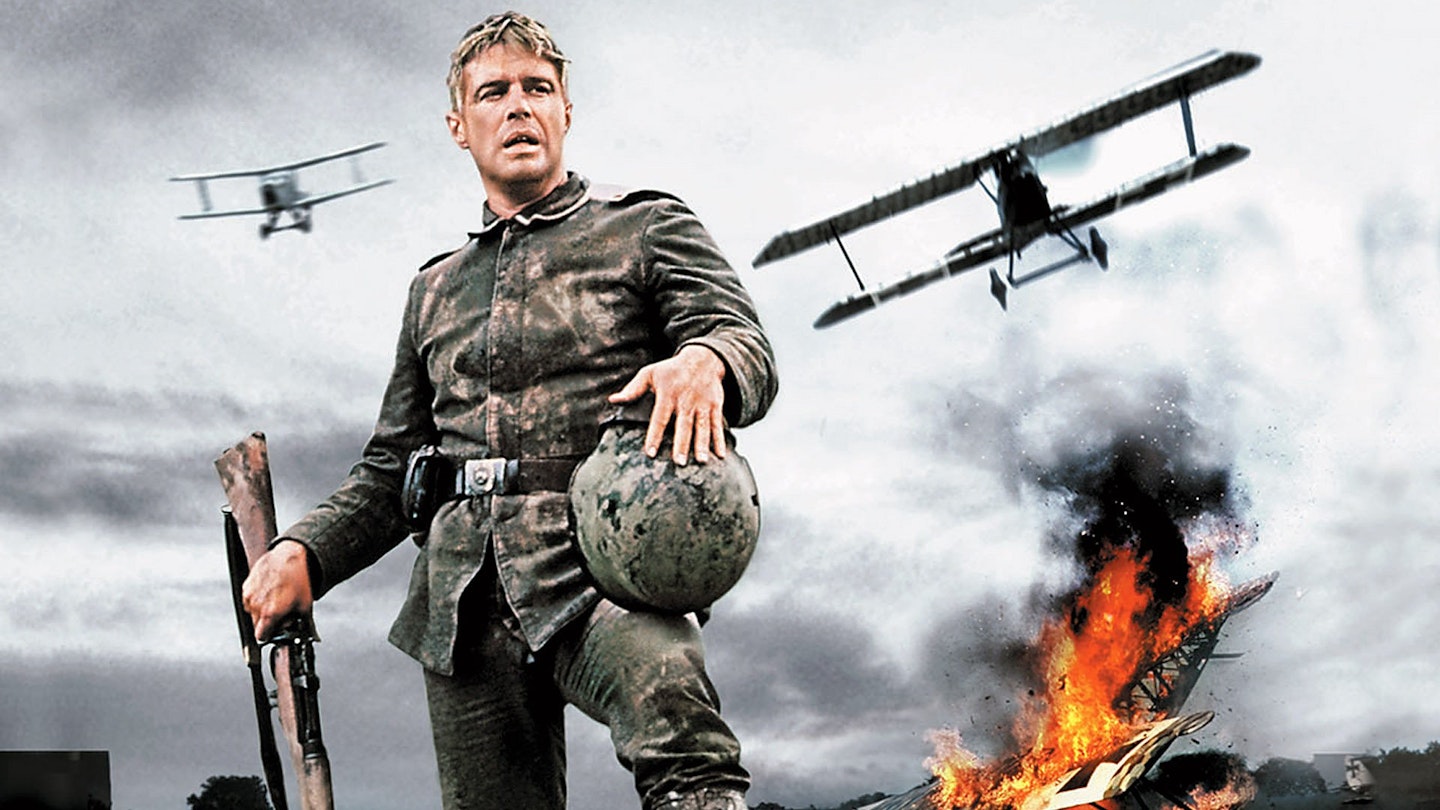An epic-length WWI flying drama, based on the best-selling novel by Jack Hunter, directed on the ground by journeyman John Guillermin but coming to life mostly in the second-unit aerial sequences directed by Anthony Squire.
Flying ace movies had come and gone in the 1930s, and this was the first attempt to revive the genre in widescreen and colour, with lovingly-restored vintage planes got into, then blasted out of the air. Its story owes something to the bastard-makes-good-but-winds-up-unhappy genre popular in the 1960s (Room at the Top, Hud) as blond upstart Peppard focuses so intently on winning the pour le merite or ‘Blue Max’ medal automatically handed out after twenty victories (‘I’m afraid it’s a rather small medal,’ admits offhand General James Mason, ‘but it’s the highest Germany can give’) that he becomes a national hero while the rest of his squadron bite the dust one by one, usually in incidents for which he is responsible.
In 1966, it was sold not only on its dogfight and stunt-flying action but on ‘three steamy bedroom scenes’, in which the glacial Andress wears only a towel and tries to get a reaction from the unresponsive Peppard. The supporting cast mixes familiar German exports (Anton Diffring, Karl Michael Vogler) with accent-sporting Brits (Jeremy Kemp, Derren Nesbitt), but Mason, as the puppet-mastering senior officer who sets Bruno up for his final crash, walks away with the whole film. An afternoon television perennial, it’s surprisingly watchable nonsense – and the daredevil flying-under-the-bridge sequence remains a classic air action sequence.
